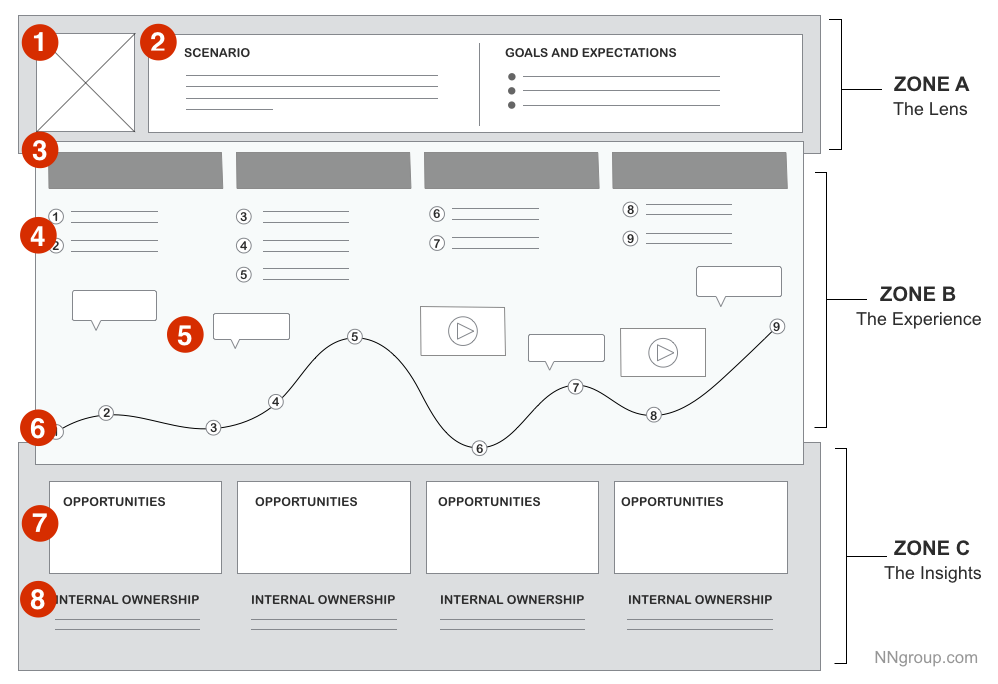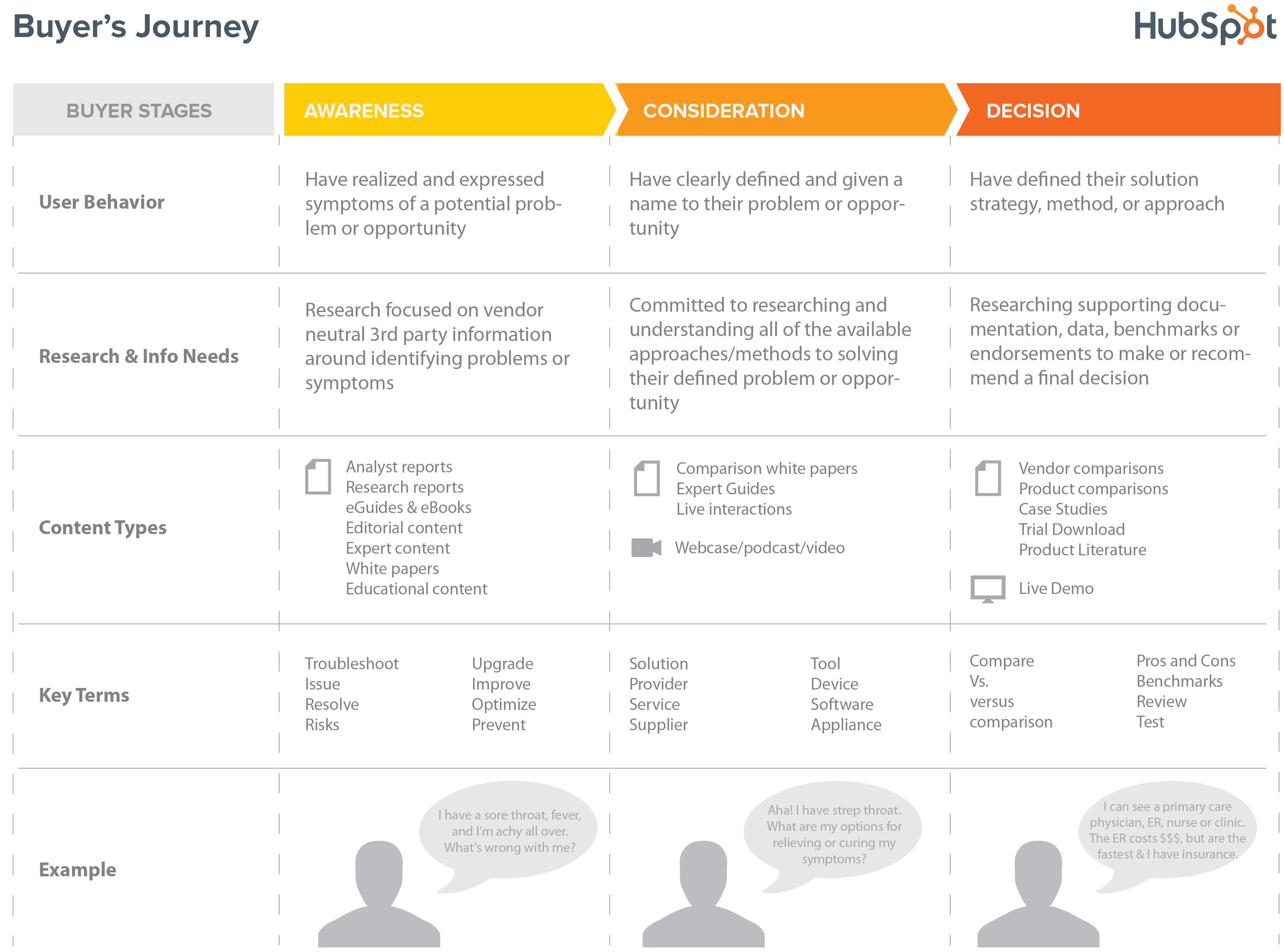Mapping your customer journey from first touch to raving fan
Customers want and need something from your business, and you’ll only be profitable if you can deliver on this. It’s one of the most basic business principles, and one we all know should be at the core of our marketing strategies. But that’s often easier to recognise than to implement, and when each part of the business is focused on their own goals and KPIs, it’s easy to lose sight of the bigger picture.
Customer journey maps are a way of unifying your goals across the business and bringing your focus back to where it should be: on your customers. It’s like a new and improved sales funnel, expanded to describe every touch point with your business from the moment they first realise they need or want something right through purchasing to the point where they’re sending new customers your way.
Because these maps are built around the customer’s experience, they’re also known as customer experience maps or touch point maps. Whichever name you use, going through the process of creating a customer journey map will give you
- a unique, outside-in perspective of your processes
- awareness of how well you’re meeting your customers’ needs
- a plan for content creation that’s linked to every stage of the journey.
How to design your customer journey maps
If you search for samples or templates of customer journey maps online, you’ll notice two things. First, every map looks different, and places emphasis on different steps in the journey and sometimes different steps altogether. Second, they can look really, really complicated, but they don’t need to be complicated to be useful.
The thing is, all the most effective customer journey maps share a few key elements, which I’ll describe in detail below. These elements can be pieced together in many different ways, dictated by the customer journey itself, to construct the most cohesive story for your unique situation.
The most important thing to know is that the customer journey map will only help you if you’ve got a specific business goal in mind. For most ecommerce store owners, you’ll loosely describe your goal as “generating more sales”, but it helps to define your goal in more detail, giving consideration to your target audience, timeframes for implementation, and how you’ll test your success.
Elements to include in your customer journey maps
Did you notice that I’ve been saying “maps”, not “map”? That’s because you’ll find yourself identifying more ideal customer profiles as your business thrives and grows, and each will have their own key problem to address—and their own journey. But don’t worry! You only need one customer journey to start with, and that’s the one for your most important customer profile and their most important problem.
Ideal customer profile or persona
Your customer’s needs and goals are what inspires them to start on their journey, so begin with a clear description of who your customer is, where they’re starting from, and where they want to end up. This will help you plan your tailored approach to helping your customers. While not every customer will fit one of your personas, your most valuable and influential customers should match quite closely and follow a similar journey with similar touch points.
A clear timeline
Breaking your customer journey down into phases with specific timeframes will help you focus on how your customers’ needs change throughout the process. While the actual steps taken will vary greatly, most ecommerce businesses can group those steps into five phases:
- Awareness: Your ideal customer recognises they have a potential problem and begins to research different ways to approach the solution and the implications of failing to take action. The “problem” isn’t necessarily something sinister—it could be as benign as requiring a gift for a colleague who is retiring next month, and searching for appropriate retirement gifts.
- Consideration: After deciding they need to take action, your ideal customer begins looking more specifically into different big-picture ways to solve the problem. Continuing the retirement gift example, your customer may decide they need to purchase either a watch or some cufflinks, and spend a week investigating their options for both product categories.
- Decision: The customer has chosen their solution category and will now spend time looking into specific products and vendors and their points of difference. At this stage, it’s starting to look like the retiring colleague will receive either a gold watch from Retailer A, a set of cufflinks from Retailer B, or a matching watch and cufflink set from Retailer C.
- Purchase: The customer has selected their solution and proceeds through the ordering process. Your ideal customer is going with the Retailer C’s matching set, because they offered PayPal checkout and their friends said you had a reliable returns policy.
- Renewal: This is everything that happens post-purchase to continue the relationship with your ideal customer, including transactional emails, delivery of the products, follow-up communications, product registration, returns, and servicing. For example, you might delight the customer with fast-tracked shipping, and your packaging might direct the retiree to find more information on your website.
If you can’t map your customer journey into these phases, don’t force it—just add any extra phases you need to capture the whole process. Some businesses use fewer phases, like in this template from Hubspot:
Using your content at touch points
Your ideal customer’s progress along their journey is driven by their questions at each phase. The only way you can adjust their direction is by providing the right answers. If you’re not interacting with your customers when they need it, you have no way to influence them. The interaction could be initiated by the customer or by you, and might be
- direct, e.g. an email or phone call
- facilitated, e.g. a paid social media ad or influencer campaign
- indirect, e.g. keeping your website up-to-date and posting interesting content to ensure high search rankings.
Every piece of content you write should be aimed at a particular touch point with a certain customer persona. For example
- Create targeted ads that lead to individual landing pages for each customer persona and each identified problem, which will turn up in search results for customer still in the awareness phase.
- Provide general educational content to help your ideal customers through the consideration phase, such as ebooks, webinars, checklists, templates and blog posts.
- Make detailed product information available through your website for customers in the decision phase. Add a chat client to your website to answer questions, and offer a discount voucher to get your ideal customer across the line.
- Remove pain points for customers in the purchase phase, by optimising your shopping cart checkout process and including shipping information and FAQs.
- Entice customers to stay with you during the renewal phase, with product user guides, care instructions, registration forms, and warranty information, and slip some discount vouchers in your transactional emails or inside the order package. Respond to their support questions and seek feedback.
The one exception to this “be specific” rule is your home page, which should greet all visitors. Just make sure you optimise your categories and navigation so ideal customers can reach their destination in a single click.
The customer’s emotional journey
Your ideal customer’s actions are heavily influenced by how they’re feeling and they’ll become more emotionally invested as they venture further down the purchasing path. Are they excited about researching and purchasing a fun product? Are they apprehensive about making the wrong choice, or annoyed because they already made the wrong choice and need to return the product? It’s important to consider this when planning your content for each touch point, so you can reassure customers when they’re doubtful, and encourage them when they’re optimistic. Some businesses use shading or sentiment curves to show this on their maps, but I prefer to use emoji.
Opportunities and accountabilities
At this point, you’ve plotted most of the customer journey, but you haven’t yet optimised it. Look for steps where you’re not currently giving customers the support they need. Plan how you’ll address this deficit, and put someone in charge of making it happen. That might mean assigning a marketing team member to write a new piece of content, tasking your support team with calling customers to seek feedback, or getting your order fulfilment team to add a discount voucher to every outgoing package.
For another great example of mapping a customer journey, check out this video by Kerry Bodine at Moz:
Make it happen
Once you’ve stepped through this process, you’ll have all the information you need to assemble your customer journey map. The goal here is get the information out to all your relevant staff members as soon as you can, so you can use it to build KPIs and make strategic recommendations.
So don’t spend too much time trying to make your map beautiful. This template isn’t the most glamorous one I’ve found, but it’s much more practical and simple to use than some of the examples I’ve demonstrated earlier:

Deconstruction of a Customer Journey Map, courtesy of the Nielsen Norman Group
Neto is a leading ecommerce platform designed to help your business grow across multiple channels. With mobile-responsive themes, fully flexible navigation, and add-on integrations to digital marketing and social media platforms, Neto empowers you to completely tailor your ecommerce store experience to your customer journey. To get more out of customer journey mapping, learn more about defining and finding your ideal customers.




